Info
Subfamily: Chloridoideae
Genus etymology: Cynodon = "dog's tooth" [Greek] refering to the scales on the stolons
Species etymology: dactylon = "finger" [Greek] refering to the finger like (digitate) inflorescence
Photosynthetic type: C4 (warm season)
Nativity: naturalized - intentional
First recorded in Hawaiʻi: 1835
Map


Inflorescence
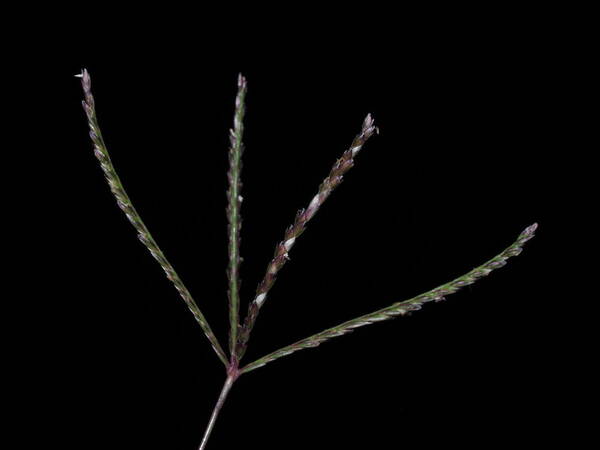




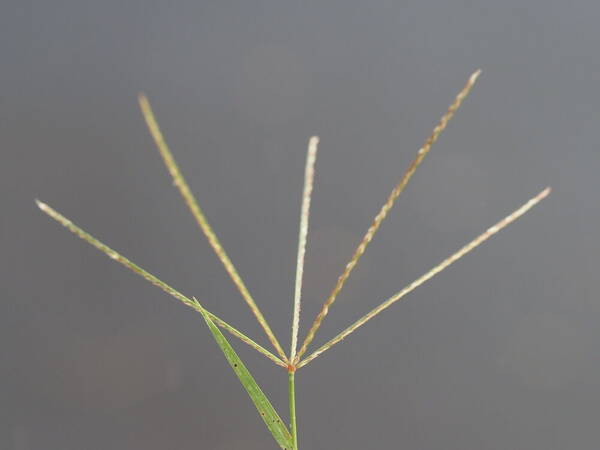







Plant







Habit


Spikelets
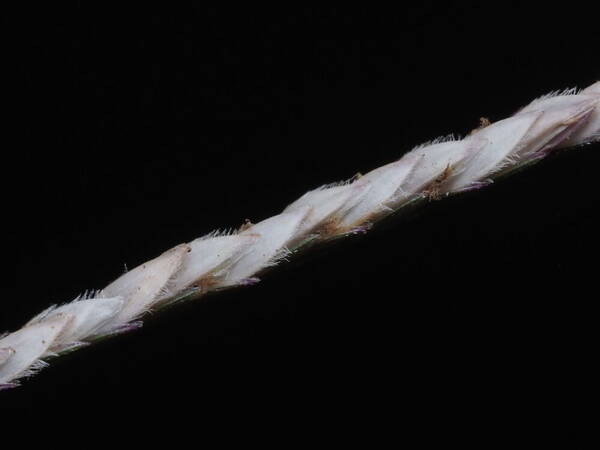




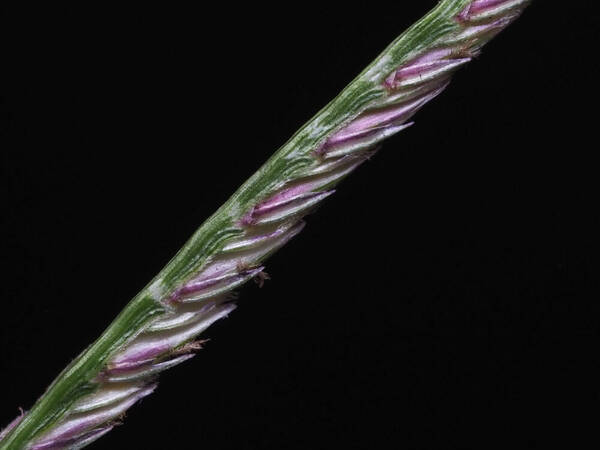
Stolons

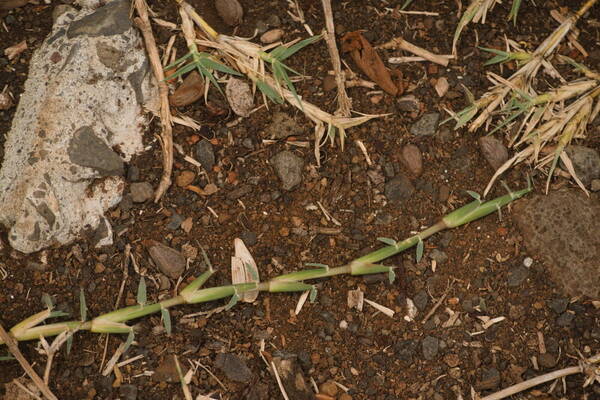

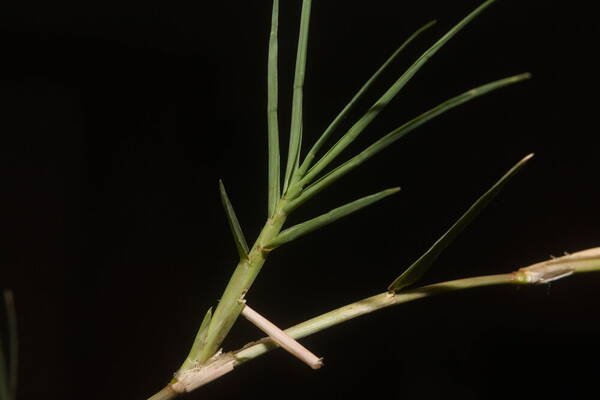



Road damage

Description
Stoloniferous sward-forming perennial with slender underground rhizomes; surface stolons slender, prostrate; culms slender, 8–40 cm. high, 0.5–1 mm. in diameter. Leaf-blades flat, or folded when dry, often short and narrow, 1–12 cm. long, 2–4 mm. wide, glaucous, scaberulous, with or without scattered hairs; ligule a membranous rim 0.2–0.3 mm. long, ciliate on the edge. Racemes usually 4–6, 1.5–6(–8) cm. long, in a single whorl. Spikelets 2–2.5 mm. long; glumes lanceolate in side view, 1-nerved, the upper 1/2–3/4 as long as the spikelet; lemma silky pubescent on the keel; palea glabrous.
(Description source: Clayton, W.D. 1970. Flora of Tropical East Africa. Gramineae (Part 1). Crown Agents for Oversea Governments and Administrations, London. 176 pp. )
Stoloniferous sward-forming perennial with slender rhizomes; stems slender, up to 40 cm high. Racemes (2–)3–6, digitate, 1.5–6 cm long. Glumes shorter than the floret; lemma 2–3 mm long, subglabrous to silky-pubescent on the keel.
(Description source: Cope, T.A, (1995) Flora Somalia, Vol 4. Royal Botanical Gardens, Kew, London. 312 pp. )
Stoloniferous sward-forming perennial with slender underground rhizomes; surface stolons slender; culms slender, up to 40 cm tall, erect or ascending; leaf laminas 2.5–12 cm × 1–2(3) mm, flat, or folded when dry, often short and narrow.Racemes usually 2–4(6) in a single whorl, 2–5.5 cm long.Spikelets 2–2.6 mm long; glumes lanceolate in profile, the superior 1/2–3/4 as long as the spikelet; lemma silky-pubescent on the keel, sometimes thinly so.
(Description source: Pope, G.V. (ed). 1999. Flora Zambesiaca. Volume 10. Part 2. Kew, London. 261 pp. )
Plants stoloniferous, usually also rhizomatous. Culms 5-40(50) cm, not becoming woody. Sheaths glabrous or with scattered hairs; collars usually with long hairs, particularly at the margins; ligules about 0.5 mm, of hairs; blades 1-6(16) cm long, (1)2-4(5) mm wide, flat at maturity, conduplicate or convolute in bud, glabrous or the adaxial surfaces pilose. Panicles with (2)4-6(9) branches; branches 2-6 cm, in a single whorl, axes triquetrous. Spikelets 2-3.2 mm. Lower glumes 1.5-2 mm; upper glumes 1.4-2.3 mm; lemmas 1.9-3.1 mm, keels not winged, pubescent, margins usually less densely pubescent; anthers dehiscent at maturity; paleas glabrous. 2n = 18, 36.
(Description source: Barkworth, M.E., Capels, K.M., Long, S. & Piep, M.B. (eds.) 2003. Flora of North America, north of Mexico. Volume 25. Magnoliophyta: Commelinidae (in part): Poaceae, Part 2. Oxford University Press, New York. 783 pp. http://floranorthamerica.org/Cynodon_dactylon )
Strongly rhizomatous or stoloniferous perennials; culms decumbent and rooting at lower nodes, 2-6(-8) dm long. Sheaths smooth, the margins scarious, sometimes prolonged as lateral extensions of the ligule, sometimes pilose toward apex; ligule a short, fringed membrane 0.2-0.5 mm long, sometimes with some longer hairs on throat; blades flat, lax, 1.5-3(-4) mm wide, upper surface sometimes puberulent, margins scaberulous. Inflorescences of panicles composed of 3-6(-9) digitately arranged spikes, these 3-5(-6.5) cm long, the joints short-pilose; spikelets 1-flowered, 2-2.8 mm long, sessile; glumes small, compressed, 1-nerved, keeled, the keel scaberulous, first glume lanceolate, curved, 0.7- 1.5(-2) mm long, second glume lanceolate, straight, 1.2-2(-2.5) mm long, tapered into a short awn tip; lemma broadly ovate, 1.8- 2.2(-2.5) mm long, 3-nerved, the lateral nerves submarginal, nerves glabrous or pubescent; palea subequal to lemma. Caryopsis ellipsoid, 2.2-2.7 mm long. [2m = 18, 26, 27, 30, 36, 40, 54.]
(Description source: O’Connor, P.J. 1990. Poaceae, pp. 1481–1604. In: Wagner W.L., Herbst D.R. & Sohmer S.H. (eds.)., Manual of the flowering plant of Hawaiʻi. Vol. 2. University of Hawaii Press & Bishop Museum Press, Honolulu )